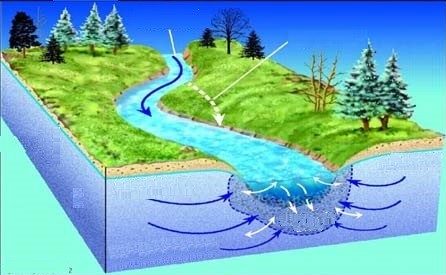Ecohydrology – what is it? And why should I care?
guest blog by Shammy Puri, The Hurst Water Meadow Trust
The Hurst Water Meadow Trust are partners in our wetland creation project, River of Life ll. Construction work to enhance the backwater on the River Thame, at Overy Mead will be starting in late July 2021. In this blog article, trustee and ecohydrology specialist Shammy Puri gives us an insight into why this project is important to the Hurst Water Meadow site.
As residents of Dorchester we are surrounded by rivers, streams and lakes, a Hydropolis, in Lelands 1545 epic poem. The ancient history of settlements around us and the wellbeing of the people who lived in them were connected to either controlling the flood waters, or harnessing them for food and fisheries. The Dykes, the Overy Mill, the sluice and weir at Buckpool Spinney are a legacy of this long history.
Today we see these waters differently – from the aesthetic and the environmental perspectives. 2020-21, ‘the years of Covid’ left many residents appreciating the peace and serenity of the standing or flowing waters – even when in flood. Perhaps looking at these scenes, residents also pondered about the organisms that live in these waters – this, in a nutshell is “ecohydrology”! It’s the science of the flowing waters (hydrology), and of the living organisms – from minute microbial organisms in sandy beds, through to the grasses and other plants (ecology) that we see within the channels and across the meadows.
In Dorchester we are very fortunate to have this science turn into action around the Old Bridge Meadow and on the Hurst Meadow. New ponds and backwaters will be constructed during the late summer of this year. We will then be able to see ecohydrology in practice!

Ecohydrology – the blue arrows show the flow of water in the river, and in the ground. The white arrows depict the interchange of organisms. The dotted area is the sandy bottom of the stream, the ‘home’ for micro organisms – the hyporheic zone.
Why should we care about ecohydrology?
Over the last few centuries there has been a global worsening of water quality, a loss of natural fisheries, and a destruction of meadows with their flowers and diverse insect life. Even so, it is refreshing to note that in recent years such losses are being gradually reversed. Flood plain meadows, such as the ones around Dorchester, are in the process of being returned to an enhanced ecohydrology around the world. Organisations such as the Floodplain Meadows Partnership, working across the UK sponsoring such improvements, have made ecological observations in our meadows around Dorchester. The visionary purchase of the Meadows in 1996 for this purpose, led by Peter Pritchard, is a proud testament to this.
With the enthusiastic prompting from Andrew Clements and Peter (in 2015), and drawing on the science, I formulated a modest ‘ecohydrology vision’ for our meadows. It covers the stretch from the weir at Buckpool to the confluence of the river Thame with the Thames. Noting this, Earth Trust included the Old Bridge Meadow into their much acclaimed River of Life II project – through which we gain a new pond and a small backwater. At the same time with another small grant, the old dry channel on the Hurst will be modified to create several small ponds.
How do these efforts enhance our local ecohydrology?
On the aesthetic side, we will see more ponded areas, filling in the winters, and drying out much later than usual in summers. Wetting the land in this way encourages the natural emergence of new plants and wild flowers. Less visible to the naked eye, we can expect to find an increase in microbial organisms in the water and soil, which are essential nourishment for insects, soil borers, mayflies, caddis flies, dragon flies and a host of other invertebrates, increasing biodiversity. In addition, through increasing the wet areas of the flood plain, we get more carbon capture. Bringing all of these together increases what is called the “natural capital” of the flood plains. This is a way of accounting for the value of natural assets and the benefits that we gain. Monetary values can be ascribed to such assets. In the case of flood plain meadows, per hectare, they amount to £192 for “water”, £203 for “sense of place” and £499 for “biodiversity”. The ‘sense of place’ is a means of monetising social history, enhancement of landscape, its intrinsic appeal, not forgetting enjoyment of the outdoors, health and well being. The figures come from a very detailed analysis at Chimney Meadows National Nature Reserve, which is a few miles west of Abingdon.
The meadows and the flood plains around Dorchester are small in area. Nonetheless they are undoubtedly of very high value to the local residents. Although in monetary terms more modest than Chimney Meadows, with the construction of the new ponds and backwaters, and in the years to come, they would increase significantly.
Ecohydrological enhancements work best when applied along the full length of rivers. Fortunately, the ‘ecohydrology vision’ encouraged the River Thame Conservation Trust and Environment Agency to pursue a plan to install a ‘fish pass’ on the weir at Buckpool Spinney. Such passes enable fish to spawn in upstream pristine areas. This enhances the aquatic ecology of waterways. Fish passes are also the means for a myriad of water organisms, essential for ecology, to freely move up and down rivers.
All in all these modest, but environmentally invaluable ecohydrological activities in the vicinity of our flood plains are worthy of pride for the residents of Dorchester!